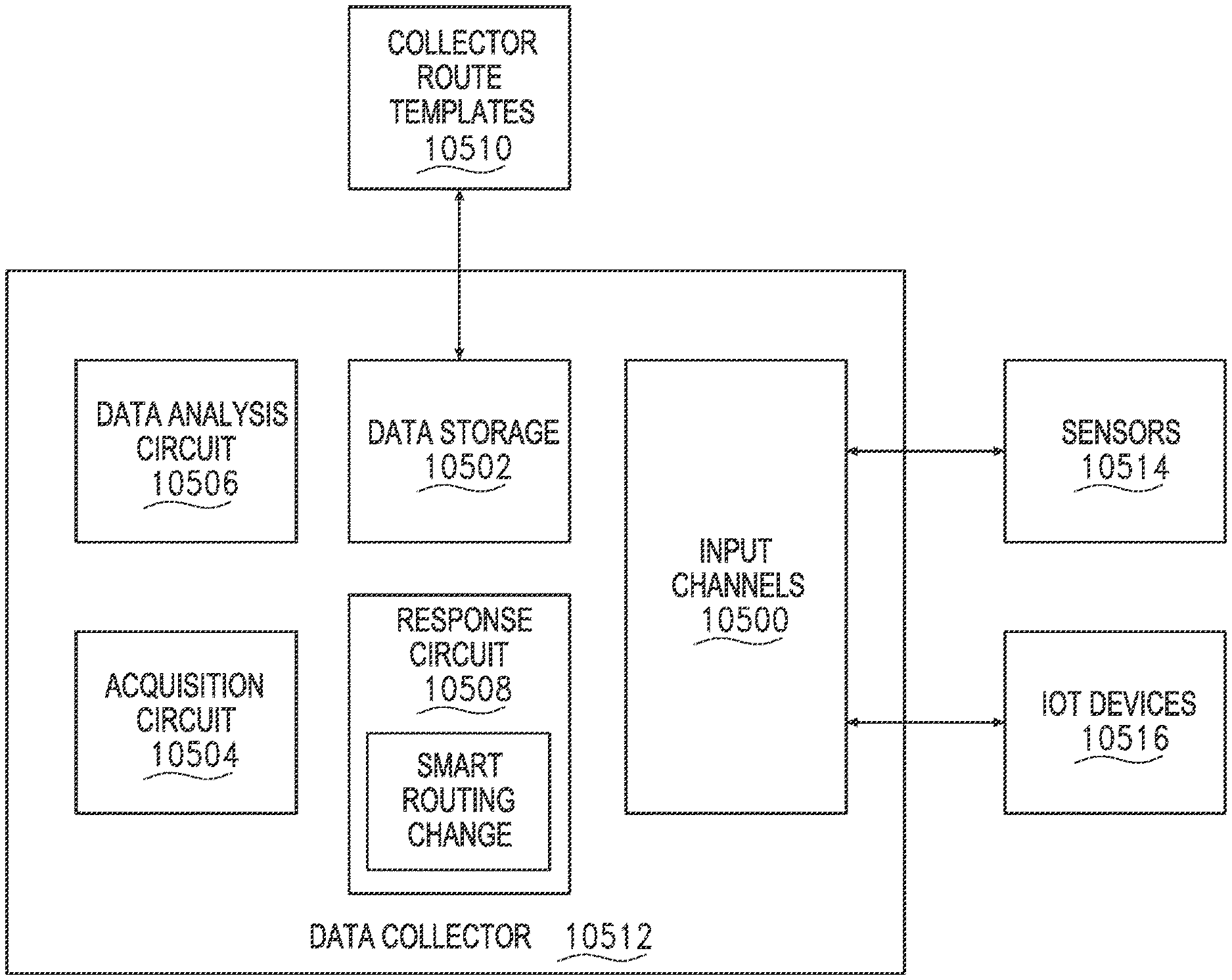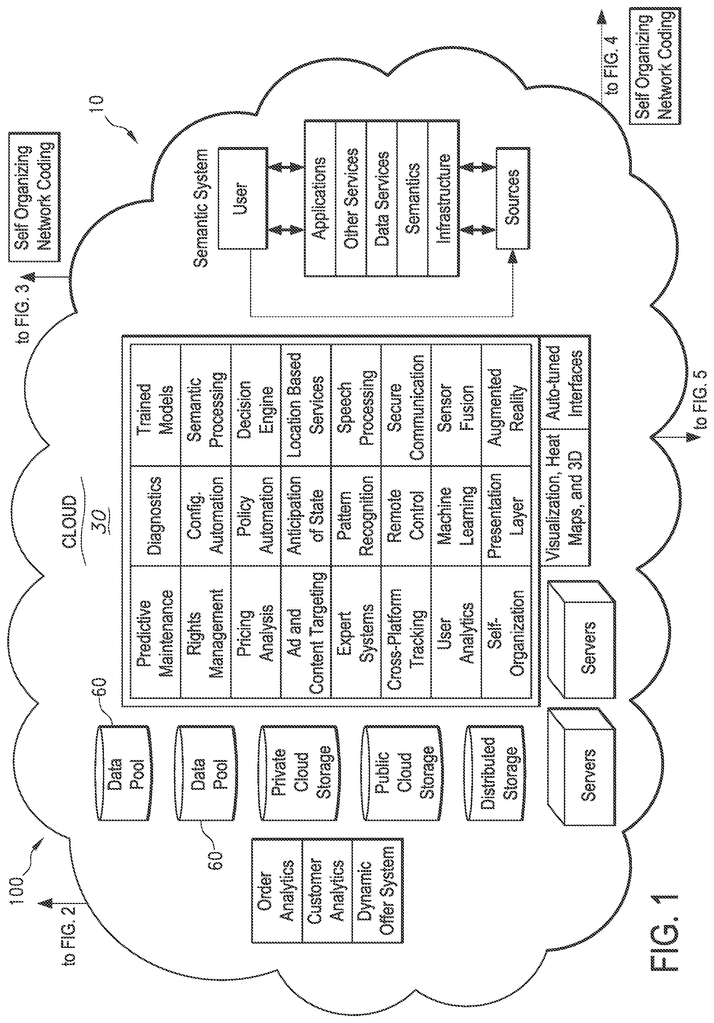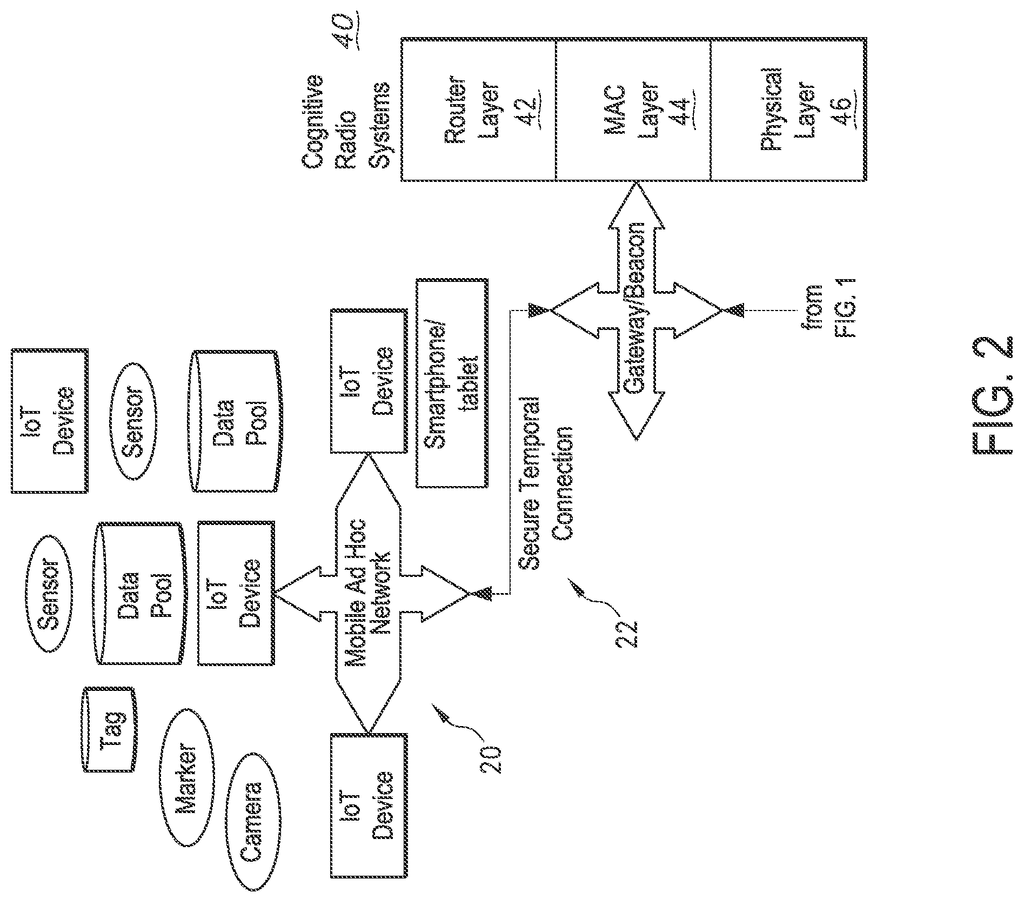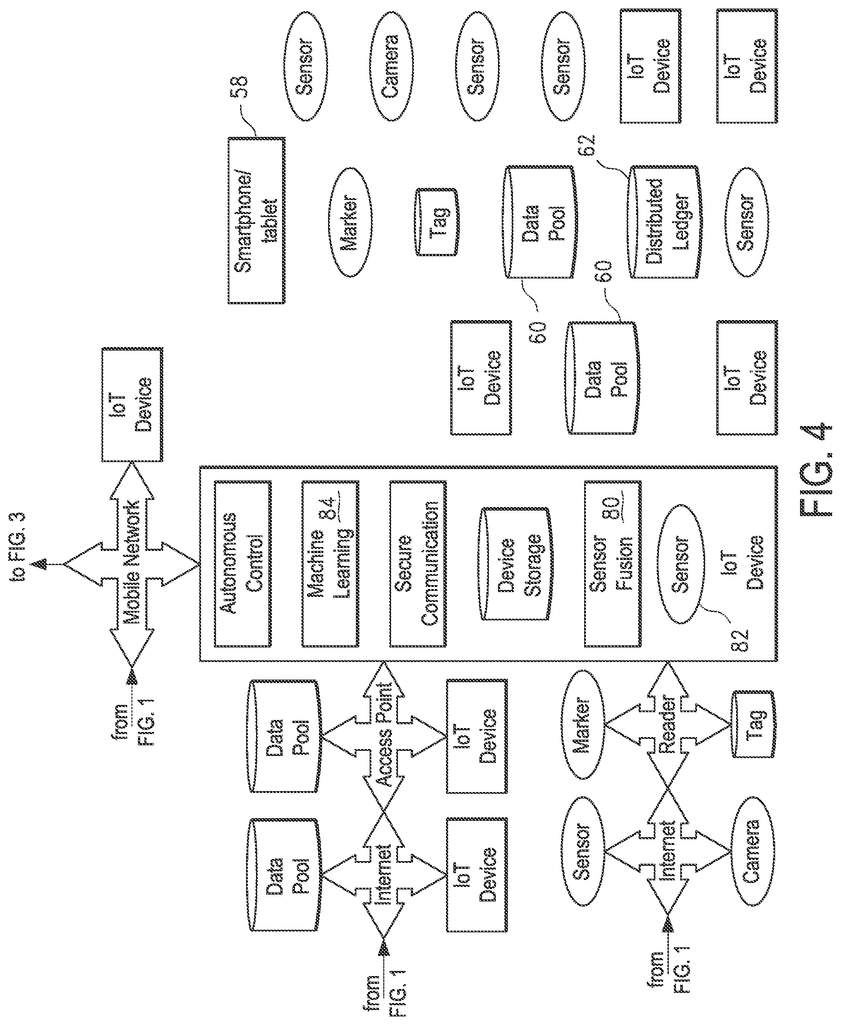Invented by Charles Howard Cella, Gerald William Duffy, JR., Jeffrey P. McGuckin, Mehul Desai, Strong Force IoT Portfolio 2016 LLC
Data monitoring is the process of collecting, analyzing, and interpreting data in real-time to identify trends, patterns, and anomalies. It is an essential tool for businesses looking to gain a competitive edge in today’s data-driven world. However, traditional methods of data monitoring can be time-consuming and inefficient, especially when dealing with large volumes of data.
This is where methods of data monitoring with a changeable routing for input channels come into play. These methods allow businesses to dynamically route data from different sources to different destinations based on predefined rules. This means that businesses can prioritize certain data sources over others, or route data to different destinations based on its relevance or importance.
The market for methods of data monitoring with a changeable routing for input channels is growing rapidly, driven by the need for more efficient and effective data monitoring solutions. Businesses are looking for ways to streamline their data monitoring processes, reduce costs, and improve the accuracy and speed of their data analysis.
There are several key players in the market for methods of data monitoring with a changeable routing for input channels. These include software vendors, hardware manufacturers, and service providers. Each of these players brings a unique set of capabilities and expertise to the table, and businesses must carefully evaluate their options to find the solution that best meets their needs.
One of the key benefits of methods of data monitoring with a changeable routing for input channels is their flexibility. Businesses can easily adjust their data monitoring processes to meet changing business needs, without having to invest in new hardware or software. This makes these solutions ideal for businesses that need to scale their data monitoring capabilities quickly and efficiently.
Another benefit of methods of data monitoring with a changeable routing for input channels is their ability to provide real-time insights. By collecting and analyzing data in real-time, businesses can quickly identify trends and patterns, and take action to address issues or capitalize on opportunities. This can help businesses stay ahead of the competition and make more informed decisions.
In conclusion, the market for methods of data monitoring with a changeable routing for input channels is a rapidly growing and dynamic space. Businesses are looking for more efficient and effective ways to monitor and analyze their data, and these solutions offer a flexible and scalable approach to data monitoring. As the demand for real-time insights continues to grow, we can expect to see continued innovation and investment in this space.
The Strong Force IoT Portfolio 2016 LLC invention works as follows
The disclosure relates to “methods for data monitoring that allow input channels to be routed in a different way.” A data collector coupled to multiple input channels is used in an example method. The data acquisition circuit interprets the detection values for each input channel. Sensor data from a first set of input channels is collected and stored along with the specifications for the sensors corresponding to the input channels. Sensor data is compared to an alarm threshold and alarm state when the threshold is exceeded. “A response circuit changes the routing of the inputs channels for data collection, from a first to an alternate route of inputs channels. The alternate route of inputs channels comprises the first input and a group related to the first.
Background for Methods of data monitoring with a changeable routing for input channels
1. Field
The present disclosure is related to data collection methods and systems in industrial environments as well as data exploitation methods and system for monitoring, autonomous action and other activities within industrial environments.
2. “2.
In order to achieve better results, operators in heavy industrial environments must take into account a variety of metrics and parameters. These include environments such as those for large-scale manufacturing (such a manufacturing of aircraft, ships and trucks), energy production (such s as oil and natural gas plants and renewable energy environments), energy extraction (such s as drilling and mining), and construction (such s as large building construction). In the past, heavy industrial environments were data-collected by humans using dedicated data collectors. They would record large batches of sensor data onto media such as tapes or hard drives for analysis later. In the past, data was sent to a central office to be analyzed, for example, by signal processing and other analyses on data collected by sensors. The analysis could then be used to diagnose problems in an environment or suggest ways to improve operations. The work was done on a weekly or monthly basis, with limited data sets.
The Internet of Things has enabled us to continuously connect to and among a wider range of devices. These devices are mostly consumer products, like lights, thermostats and other devices. The more complex industrial environments are more challenging, because the data available is limited and it’s difficult to deal with multiple sensors. Industrial solutions that work in the industrial sector are more difficult to produce if they are “smart”. “There is a need for improved data collection methods and systems in industrial environments as well as improved methods and system for using collected data for improved monitoring, controlling, intelligent diagnosis of issues and intelligent optimization of operations within various heavy industrial environments.
Industrial systems in different environments face a variety of challenges when utilizing the data collected by a multitude of sensors. Many industrial systems are equipped with a variety of computing and networking resources at one location. This is due to factors such as the fact that parts of the system may be upgraded or replaced at different times, mobile equipment entering or leaving a particular location, or the risk and capital cost of upgrading equipment. Many industrial systems are also placed in difficult environments. Network connectivity is variable and there can be a variety of noise sources, such as electro-magnetic noise (EM noise) and vibrational noise. The process parameters of many industrial processes can be highly variable, and the non-linear response to operations outside of nominal limits is common. Sensing requirements can change with time, the operating stage of a process or equipment degradation, as well as operating conditions. The sensing configurations of industrial systems are often conservative and detect many parameters which are not required during the majority of operations or accepts risk. They also do not detect some parameters that may only be used occasionally to characterize the system. Moreover, industrial systems that were previously used are not flexible enough to configure sensed parameters quickly and in real time, or manage system variances such as intermittent availability of the network. Many industrial systems use the same components, such as mixers, pumps, tanks and fans. However, industrial systems that were previously available did not have a way to use data from components that could be used for a different process or that might be unavailable because of competitive concerns. Additionally, previous industrial systems did not integrate data from off-set systems into the sensor planning and execution in real-time.
These methods and systems include components, devices, workflows, services, processes, and the like that are deployed in different configurations and locations, such as: (a) at the?edge? These methods and system include components, devices and workflows as well as services and processes. They can be deployed in different configurations and places, including: (a), at the “edge” These methods and systems include a range of ways for providing improved data, including a range of methods and systems for improving data collection, as well as methods and systems to deploy increased intelligence at the edge, in the network, and in the cloud or premises of the controller of an industrial environment. These methods and system include a variety of ways to provide improved data, including a variety of methods and methods for improving data collection. They also include methods and methods for increasing intelligence at the edge of the network or the premises of the controller.
The inventions include methods and systems for continuous ultrasonic data monitoring, such as providing continuous monitoring of rotating elements and bearings in an energy production facility, and cloud-based systems that provide machine pattern recognition using remote analog industrial sensors, or data multiplexing at an Industrial IoT Device for storage of fused data streams; and self organizing systems that
The present invention discloses methods and systems for training artificial intelligence models (?AI?) based on industry-specific feedback, including training an AI model based on industry-specific feedback that reflects a measure of utilization, yield, or impact when the AI model operates in a sensor data from an industrial environment; for an industrial IoT distributed ledger, including a distributed ledger supporting the tracking of transactions executed in an automated data marketplace for industrial IoT data; if utilizing specialized sensors such as a network condition-sensitive multisensor collector “Methods and systems are disclosed herein for training artificial intelligence (?AI?)
The disclosures include methods and systems for a heat map layer that is presented on industrial glasses with augmented reality or virtual reality, based on parameters and/or patterns in the collected data, and for self-organized, condition-sensitive tuning of AR/VR user interfaces using feedback metrics.
The present disclosure describes a data collection system in an industrial environment that includes a self-sufficient box to collect and analyze data. According to one non-limiting embodiment, the system can include: a data circuit to analyze a number of sensor inputs. A network control circuit to send and receive information about the sensor inputs from an external system.
Another embodiment of any one of the above embodiments of this disclosure can include situations in which the system includes a plurality network communication interfaces.
The network control circuit may bridge another system with a similar configuration from one network to the other using the plurality network communication interfaces.
A further embodiment of one of the previous embodiments may include situations in which the system dynamically reconfigures based on the requests received via the one or multiple of the plurality network communication interfaces.
Another embodiment of any one of the preceding embodiments of this disclosure may include situations in which the system dynamically reconfigures based on remote user requests.
Another embodiment of any one of the above embodiments of this disclosure may include situations in which the system dynamically reconfigures based on an assessment of a type of data of the acquired data by the data acquisition boxes.
Another embodiment of any one of those embodiments previously described of the present disclosure can include situations in which the system dynamically reconfigures based on a parameter operating at least one system and another similarly configured system.
The present disclosure can include a further embodiment where the network control circuit transmits sensor data as packets that are designed to be accessed and stored by other systems with similar configurations.
Another embodiment of any one of the above embodiments of the disclosure can include situations in which, when a failure is detected in the systems, the network circuit sends at least a part of its stored data to another system similarly configured.
A further embodiment of one of the above embodiments may include situations in which the network control circuit decides how to route the information through a connected network of similar configured systems, based on the source of the information request.
Another embodiment of any one of the above embodiments of the disclosure can include situations where the network control circuit decides on the routing of data in a similar configured network based on the frequency of information requests.
Click here to view the patent on Google Patents.









